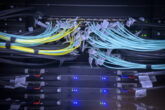October 24, 2023
AI Is Already at War
How Artificial Intelligence Will Transform the Military
In 2002, a special operations team practiced raiding a safehouse. The team silently approached a two-story building, built for military training, where a fictitious terrorist leader was hiding. One soldier crept up to an open window and tossed in a small drone piloted by artificial intelligence. The AI drone began flying autonomously through the building, room by room, beaming footage from its camera directly to the commander’s handheld tablet outside. In just a few minutes, the team had full situational awareness of the interior of the building. It knew which rooms were empty, which were occupied by sleeping family members, and where the primary target was. The team entered the building knowing exactly where to go, reducing the risk for each member. The drill was a success: had it been real, the team would have killed the terrorist leader.
The stakes of slowing AI down are unacceptably high, but so are the stakes of racing ahead without needed precautions.
The AI-piloted quadcopter, designed by Shield AI (where I was an adviser), has since been used in real-world operations. It is just one of the many ways that AI is beginning to reshape U.S. national security. The U.S. military is using AI to optimize everything from equipment maintenance to budgetary decisions. Intelligence analysts are relying on AI to quickly scan mountains of information to identify relevant patterns that enable them to make better judgments and to make them faster. In the future, Americans can expect AI to change how the United States and its adversaries fight on the battlefield, as well. In short, AI has sparked a security revolution—one that is just starting to unfold.
Read the full article from Foreign Affairs.
More from CNAS
-
Technology & National Security
NOTUS Perspectives: AI Requires Massive Allocations of Energy. Will Other Sectors Suffer?On the current trajectory, the government may need to prioritize energy for AI over other uses to ensure the United States remains the global leader in advanced AI....
By Janet Egan
-
Technology & National Security
Countering the Digital Silk RoadThe year 2025 marks the 10th anniversary of the Digital Silk Road (DSR), China’s effort to strengthen its global ties and influence through technology. In the decade since the...
By Vivek Chilukuri & Ruby Scanlon
-
Technology & National Security
Microsoft Announcement Highlights Complicated Relationship Between Big Tech and WarMicrosoft restricted the Israeli military's access to some of its technology after it found that Israel's Defense Ministry was using its services to carry out mass surveillanc...
By Paul Scharre
-
Technology & National Security
Quantum Sensing at Scale: Navigating Commercialization RoadblocksQuantum sensing is racing forward in the lab—but turning prototypes into products still means wrestling with supply chains, certification, and unit economics. In “Quantum Sens...
By Constanza M. Vidal Bustamante




